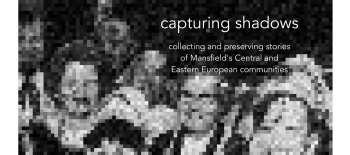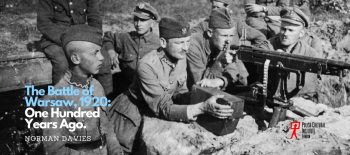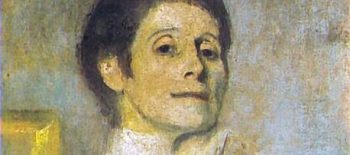Katowice lies low in Poland’s southern borderlands. Unlike its better-known and more popular neighbour Kraków, Katowice is part of Upper Silesia and sits inside Poland’s largest continuous cluster of towns – the Katowice urban area. If you’ve read my previous blog post about Polish museums, you’ll know that there’s a specific reason for the population density around Katowice: the region is home to vast coal reserves and has long been Poland’s industrial centre.
This means that Katowice has had an interesting, if tumultuous, history. Inhabited by Polish Silesians since at least the 12th century, it spent a few hundred years under Czech then Austro-Hungarian governance, before being incorporated into the Prussian Empire in 1742. Even in the 100 years that Poland has been independent, Katowice’s story hasn’t been quite so straightforward. At the end of World War I, both Germany and Poland wanted control of the city. After various skirmishes in the region, a 1921 plebiscite finally handed Upper Silesia to Poland. Just 18 years later, the immediate vicinity around Katowice was the site of the Nazi invasion of Poland. It fell into German hands again for the next six years….and was handed back to Poland in 1945.
Naturally, for a city that has long been subjected to outside control, Katowice has developed and maintained a distinct regional culture. Silesians are Silesians, to the point that there’s even a Silesian independence movement. It’s not just local political games either – I can vouch from my visit to Katowice that there’s a specific cultural feel to the place.
This was apparent to me almost immediately after arriving in the city. At the time, my Polish language skills weren’t particularly strong, yet as I walked through the train station, I had the odd feeling that I was understanding more and more Polish. I somehow recognised that I could buy a geszynk (present) from a gift shop, that a small kiosk was selling zonynbryle (sunglasses) for the hot weather, and that an announcement was welcoming me to the banhow (train station). The reason for this will be clear to any German speakers (like myself): there’s a strong Germanic influence on the Silesian dialect. In fact, some linguists claim that Silesian is a distinct language and more than half a million Poles state that its their native tongue.
Language was my first Katowice lesson, but I soon learned that music plays a significant role in Silesian cultural identity. David Bowie’s largely instrumental song Warszawa is, of course, named after the Polish capital. What you might not know, is that the song was inspired by a record Bowie heard on a stopover in Warsaw, as he took a train from Moscow to Paris with Iggy Pop. The song in question was Helokanie, a folk choir piece performed by the Śląsk Song and Dance Ensemble – Śląsk for short. Śląsk (whose name means ‘Silesian’) perform music grounded in Silesian folklore, often invoking sounds and imagery that are unfamiliar to other Poles.
Regrettably, I didn’t have any encounters with Silesian folk music during my visit. I did, however, brush past an entirely different side of the local music scene: Katowice is the only city in Poland where the majority of street buskers I saw were rappers. This makes sense. After all, Katowice is the birthplace of Polish hip-hop, a music genre that was first developed there back in 1992. The remarkable story of the scene is best told through the film Jesteś Bogiem. To put it briefly, hip-hop was pioneered in Poland by lyricist Magik and his two groups Kaliber 44 and Paktofonika. They made cold beats and wrote about troubled lives with intelligent lyrical playfulness – the ‘44’ in Kaliber 44 is a reference to Poland’s national poet, Adam Mickiewicz. Magik committed suicide at the age of 22; his music continues to be loved in Polish clubs.
If folk choirs and hip-hop isn’t your thing, Katowice has much more that. During my stay, I picked up a few Polish Jazz classics in a second-hand record shop and came across the local Parnas Brass Band performing a head-turning rendition of an 80s classic. Unsurprisingly, Katowice is Poland’s first UNESCO City of Music. In a wonderful blend of past and present, it now hosts the Tauron New Music Festival and OFF Festival, two forward-thinking electronic music weekends held in an old coal mine.
Just like its Spodek concert hall, a massive UFO-like structure that juts above the horizon, Katowice is looking to the future. It was once associated with dark streets and danger; now it has a spacious bright railway station, drinking terraces and veggie buffets. As a coal capital, its air has historically been some of Poland’s worst; these days, its local government is embracing novel forms of pollution control, while the tech industry is promoted as an alternative to fossil fuels. For many Poles, the town is a synonym for depressing misery; on the contrary, it’s actually the sort of place that Yoko Ono recently sued over a (quite delicious) hipster lemonade brand, and where you can shop for Supreme, Palace and assorted vintage sportswear.
Katowice’s historical success lies partly in its coal-rich location. This is a town that, sooner or later, would be a fiercely-fought site of industry and was fated to draw financial investment and a wide-ranging population. Yet that’s not all. Silesia as a region has constantly changed hands over the centuries – its geopolitical borders have almost relentlessly been re-carved and its inhabitants have always been required to adapt. To my mind, this is what is on display in modern Katowice. It’s a city that embraces opportunity, looks forward, and pulls off the difficult trick of being both steeped in tradition and full of vibrant youthfulness.
It’s one of the most exciting place that I’ve visited in Poland and makes for a great dive into some of the country’s lesser known culture.



